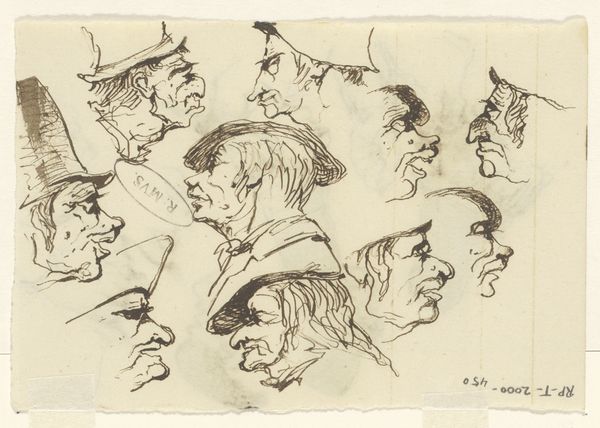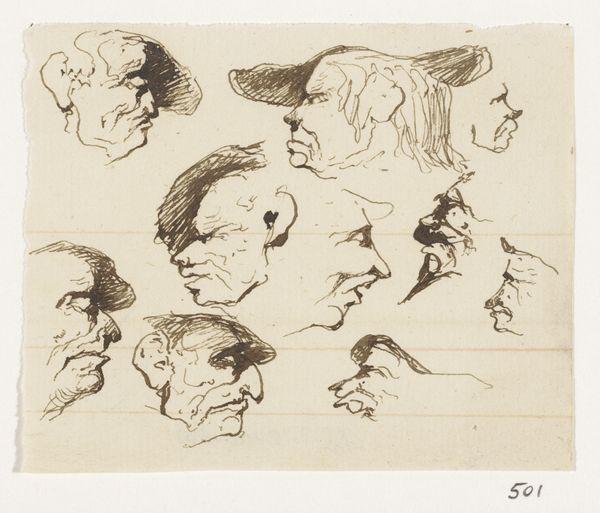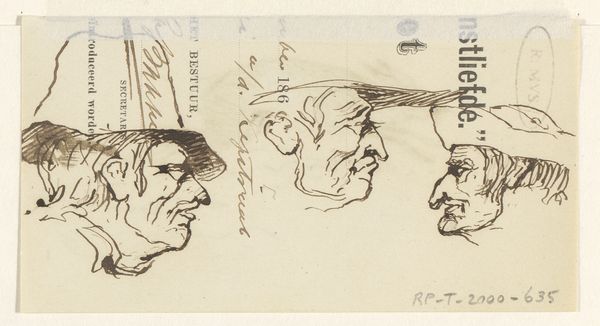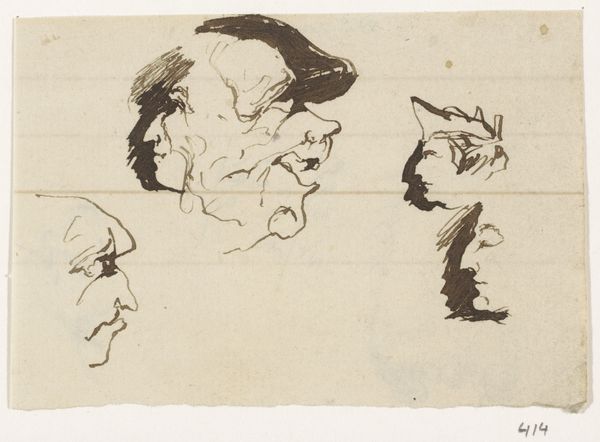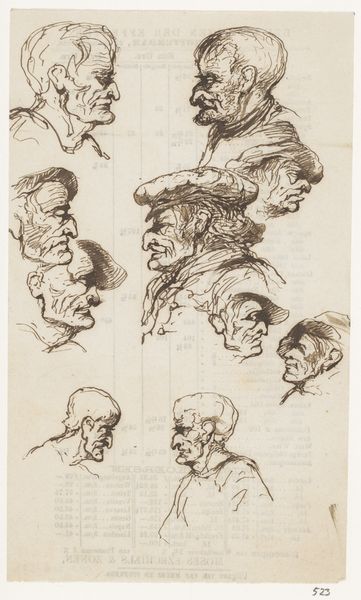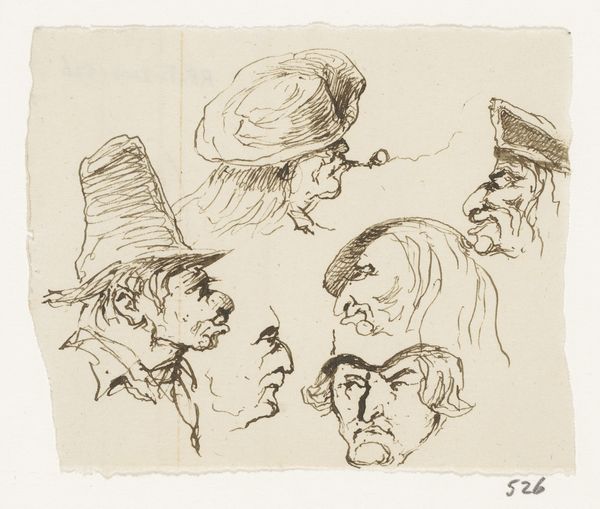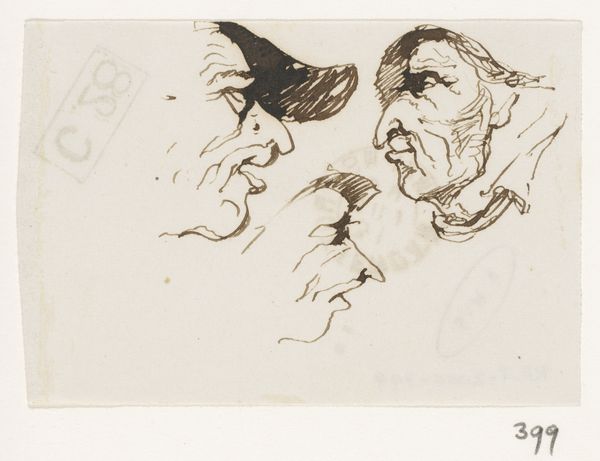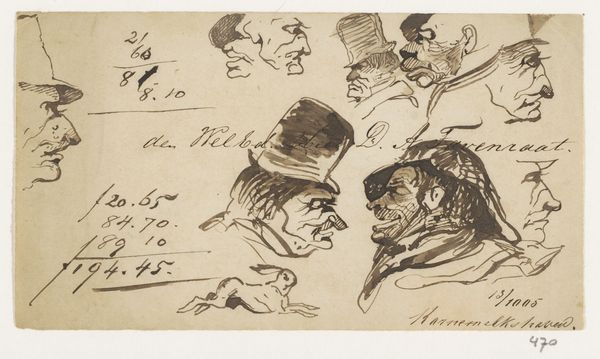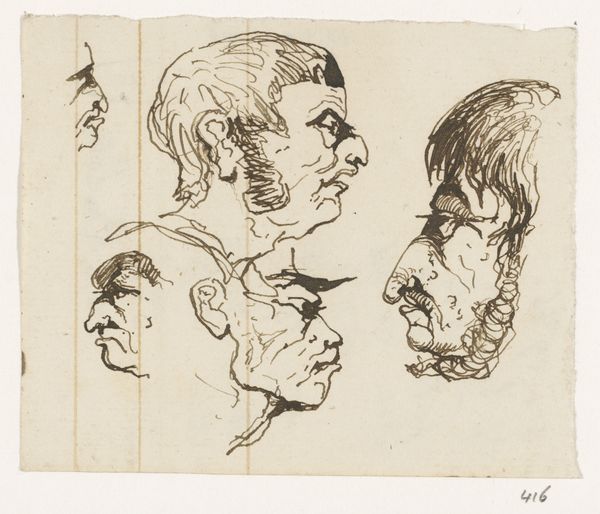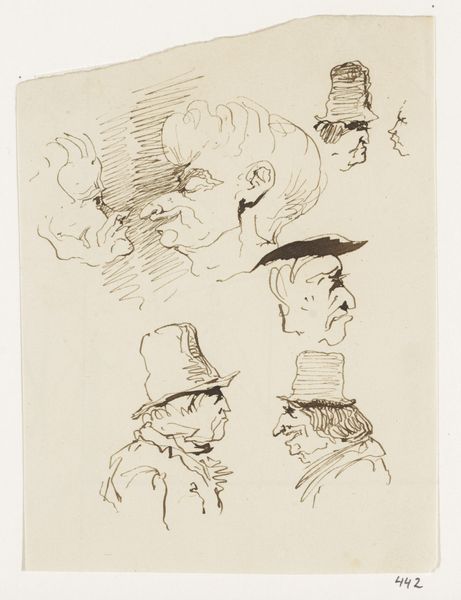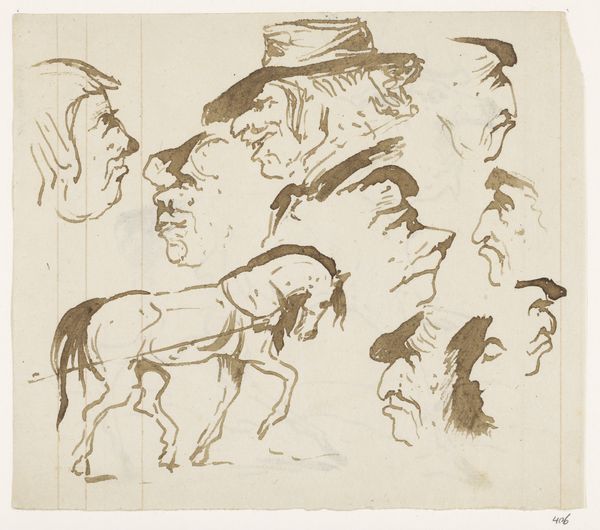
Dimensions: height 81 mm, width 96 mm
Copyright: Rijks Museum: Open Domain
Curator: This pen and ink drawing is titled "Koppen," attributed to Johannes Tavenraat, dating roughly from 1840 to 1880. Editor: Immediately striking, aren’t they? These are bold caricatures, capturing grotesque physiognomies with minimal lines. Notice the dramatic play of angles, especially in the noses. Curator: Indeed, and these aren't simply faces; they speak to the period’s fascination with phrenology and the visual stereotyping of different social classes and personalities. The exaggerated features may reflect prevailing societal biases of the time. Editor: The economy of line is masterful here. See how Tavenraat uses quick strokes to suggest volume and shadow? It's almost like he's dissecting the planes of the face with pure ink, creating both a study of form and an essay in expressive ugliness. Curator: And it's vital to consider this within the Romantic period. The intense interest in emotion, particularly the darker, less palatable emotions, can be discerned. Consider what the visual rhetoric tells us about power and social hierarchies. Who were the 'Koppen' Tavenraat intended to depict? Editor: You’re right. Each mark feels deliberate. There’s a rhythm, a flow. But beyond any sociological reading, I see pure formalism. How Tavenraat captures the curvature of the skull with one fluid stroke. These are not simple studies of people but elegant expressions of form. Curator: But that "elegance," as you put it, risks sanitizing the potential prejudice at play here. The caricature has a long and fraught history, one connected to the dehumanization of marginalized groups. Are we confronting uncomfortable stereotypes rooted in colonial history, where "difference" was othered and pathologized through visual distortion? Editor: That said, look at how each face is composed with an almost mathematical precision. From the angle of the brow to the curve of the jowl, these features are building blocks. Dehumanization is the opposite, denying these very fundamentals of existence and form. Curator: Perhaps a little of both is relevant, then. Art as a tool for understanding our past prejudices but also an acknowledgment of artistic dexterity. Editor: I will gladly concur, so well observed! It gives the viewer more to unpack from each of the drawings.
Comments
No comments
Be the first to comment and join the conversation on the ultimate creative platform.
